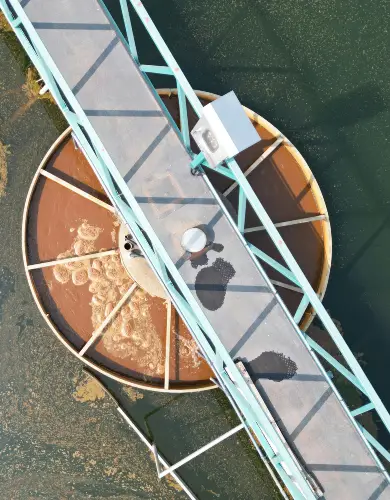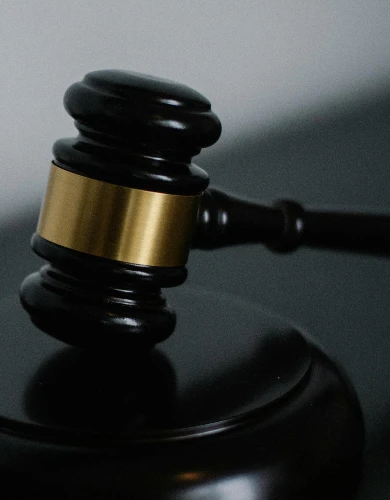How to claim a sewerage rebate for your business
Business water rates for sewerage charges are complex, and the calculation method can result in businesses paying for wastewater they do not actually discharge.
If your business uses a significant amount of water that doesn’t end up in the public sewers, whether through manufacturing, cooling, irrigation, or being incorporated into products, you could be eligible for a sewerage rebate.
In this guide to sewerage rebates for businesses, we cover:
- What is a sewerage rebate for businesses?
- Types of sewerage rebates available for businesses
- How to apply for a sewerage rebate
- Which industries qualify for sewerage rebates?
- How do different water companies handle a rebate?
What is a sewerage rebate for businesses?
Sewerage rebates are discounts or refunds on a commercial water bill when it can be shown that the business uses fewer sewerage services than a typical company.
Commercial properties are not usually fitted with a meter to measure the amount of wastewater they discharge into the sewers, so water companies make estimates to determine how much to charge for sewerage services.
A successful sewerage rebate can result in:
- Reduced sewerage charges going forward
- A rebate for recalculated previous bills
To understand how rebates can be claimed, we’ll first briefly explain the estimates water companies commonly use to calculate sewerage charges on bills.
Understanding how sewerage charges work
There are two main sewerage charges on a water bill that may be eligible for rebates. Here’s how each is calculated:
Wastewater metered charges:
Businesses currently pay between £1.50 and £4.80 for each cubic metre of wastewater discharged into the sewer.
Water companies use a Return to Sewer Allowance (RSA) to estimate how much water has entered the sewer. Here’s how it is calculated:
Wastewater discharged (m³) = Water consumed (m³) × RSA (%)
Most water companies apply a standard RSA of 95%. So, if your business consumes 100 m³ of water in a month, they will assume you discharge 95 m³ of wastewater into the sewer.
For a full explanation, visit our business water bills page.
Surface drainage charges:
The local water companies, Northumbrian Water, Severn Trent Water, United Utilities, and Yorkshire Water charge businesses in their areas for surface drainage based on the surface area of their properties.
These companies assume that all rainwater landing on the premises flows into the local sewers.
For a full explanation, visit our complete guide to surface drainage charges for businesses.
Types of sewerage rebates available for businesses
Due to the estimates made for sewage and drainage charges (as outlined above), there are three common scenarios in which sewerage rebates may arise.
Return to Sewer Allowance rebate
A Return to Sewer Allowance rebate can be claimed when a business returns less than 95% of the water it uses to the sewers.
An illustrative example is a dairy farm that uses most of its water in troughs from which cows drink. The average dairy cow consumes around 100 litres of water per day, which is not returned to the sewer.
In this case, the farm can submit a claim for a sewerage rebate, requesting a lower RSA be applied to its bills to reflect the water consumed by the cows.
Leak allowance
A leak allowance provides a rebate on volumetric wastewater charges when a significant water leak occurs and the leaked water does not enter the sewerage system.
This is common in cases where a leak occurs in a pipe outside the property, allowing water to seep into the ground and subsequently evaporate.
A sewerage rebate can be claimed for the volume of water lost during the leak period that did not enter the sewer.
💡If an issue with the water meter caused the leak, you may be able to apply for a rebate on both water and wastewater charges for the leaked water.
Change to surface area draining to the sewerage system
A business can claim a reduction in its surface drainage charges if it can demonstrate that a significant portion of the rainwater falling on its property does not drain into the sewerage system. A common example is a property with large grounds situated next to a river, where a substantial amount of rainwater drains directly into the river rather than the local drainage system.
How to apply for a sewerage rebate
MOSL, the market operator for the non-household water market, has produced a standard form that can be used to apply for a sewerage rebate.
The form can be completed by a non-household customer in relation to a water supply point where they are the account holder.
Form H 01 – MOSL – Request for an allowance to wholesale charges and or a volumetric adjustment
The completed form should be sent to your current business water supplier. Your business water supplier will review your application and assist in gathering any additional information required by the local water company.
The form requests the following information, depending on the type of sewerage rebate being applied for:
Claim for change to Return to Sewer Allowance
A change to the Return to Sewer Allowance requires the following supporting information, depending on the reason:
- Irrigation – A description of what is being irrigated, e.g. two bowling club greens with a grass surface.
- Evaporation – The surface area of standing water, such as cooling towers or swimming pools.
- Drinking water for livestock – Details of the number of livestock and their daily water consumption, based on NFU and DEFRA figures.
- Water in products – The water content of the product and production volumes.
If your property uses water loggers to isolate specific water usage, the details of these devices and recent meter readings should be included with the application.
The application must also include information about other types of water usage, such as toilets, staff kitchens, and other facilities that discharge wastewater into the sewer so that an overall RSA can be accurately calculated.
Leak allowance claim
A leak allowance claim can be made once the repair work has been completed and water consumption on the site has returned to normal.
The following evidence should be submitted with the form:
- Proof that the leak has been repaired (e.g. a repair invoice)
- Two water meter readings show that consumption has returned to normal since the leak
- A photo of the area where the leaked water soaked into the ground
Most water companies require the claim to be submitted within six months of the repair work being completed.
Claim for change to surface area draining into the sewerage system
A claim to change the surface area draining into the sewerage system requires a detailed site plan containing the following drainage information:
- Site boundaries
- Location of public sewers
- Route of wastewater pipes, including manholes, gullies, and inspection chambers
- Position of any watercourse to which water may drain
- Positions and surface areas of concreted or tarmacked surfaces or buildings
- An estimate of the percentage of the site connected to the sewers for surface drainage
A claim for a change to the surface drainage area is complex and typically requires specialist expertise. We recommend engaging a business water auditor to assist in completing this type of claim.
Which industries qualify for sewerage rebates?
The following table shows common examples of the types of companies that typically qualify for sewerage rebates.
For each, we explain which type of sewerage rebate applies and the reasons why.
| Industry | Rebate type | Explanation of how sewerage is avoided |
|---|---|---|
| Power station | RSA | Evaporation of water from cooling towers. |
| Spas | RSA | Evaporation of water from heated swimming pools. |
| Sports clubs | RSA | Evaporation of water used in irrigation. |
| Golf clubs | Surface drainage | Rainwater drains into watercourses on the site. |
| Farming | RSA | Water consumed by livestock. |
| Farming | Surface drainage | Rainwater runs off into ditches or natural drainage channels. |
| Garden centre | RSA | Water used for plant growth. |
| Food manufacturing | RSA | Water used and retained in food or beverage production. |
| Boat yards | Surface drainage | Rainwater drains directly into the sea or a river. |
How do different water companies handle a rebate?
Sewerage rebate claims are submitted jointly by the end customer and their business water supplier, who makes the claim to the relevant water company.
If accepted, the water company will reduce its wholesale charges to the supplier, who will then pass this reduction on through lower business water bills.
Each water company in Britain has its own policies for handling rebate claims, including:
- Deadlines for submitting claims
- Methodologies for calculating allowances
- Time periods over which claims can be backdated
We recommend visiting your local water supplier’s website to understand the specific rules for sewerage rebates in your area.
You can use the water.org search tool to find the relevant water company for your location.

